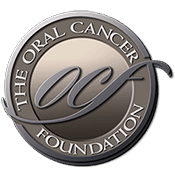- 4/24/2007
- Haifa, Israel
- Oded Hershkovich et al.
- The Journals of Gerontology Series A: Biological Sciences and Medical Sciences 62:361-366 (2007)
Oral cancer’s much higher prevalence among older people may be due to an age-related reduction in protective salivary antioxidant mechanisms and/or an age-related increase in the magnitude of oral carcinogen attack, such as reactive oxygen species (ROS) and reactive nitrogen species (RNS), causing DNA aberrations.
This study found a significantly reduced total value of salivary antioxidant capacity in elderly persons (as measured by overall antioxidant capacity [ImAnOx] assay), (46% of healthy individuals, p =.004), increased oxidative stress (86% increase in carbonyl concentrations—indicators of enhanced ROS attack, p =.001), and increased salivary concentrations and total values of RNS (7-fold and 3-fold higher respectively, p =.001), all contributing to increased DNA oxidation of oral epithelial cells.
Salivary oxidative stress-related changes in the intimately related saliva and oral epithelium compounded with higher viscosity of saliva may explain the higher prevalence of oral cancer in the elderly population. Administration of local therapeutic agents (i.e., antioxidants) to the oral cavity should be considered.
Authors:
Oded Hershkovich (1), Itay Shafat (2) and Rafael M. Nagler (3)
Authors’ affiliations:
1 Oral Biochemistry Laboratory,
2 Cancer and Vascular Biology Research Center, and
3 Department of Oral & Maxillofacial Surgery, Rambam Medical Center and Faculty of Medicine, Technion-Israel Institute of Technology, Haifa, Israel.

Leave A Comment
You must be logged in to post a comment.